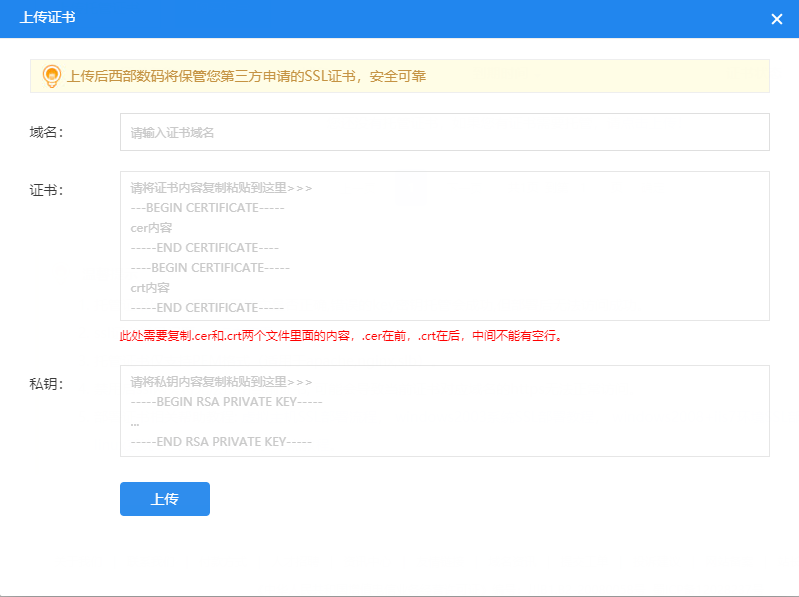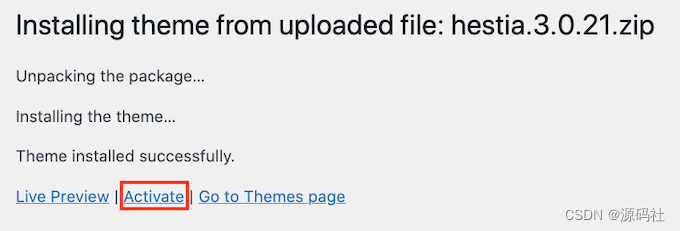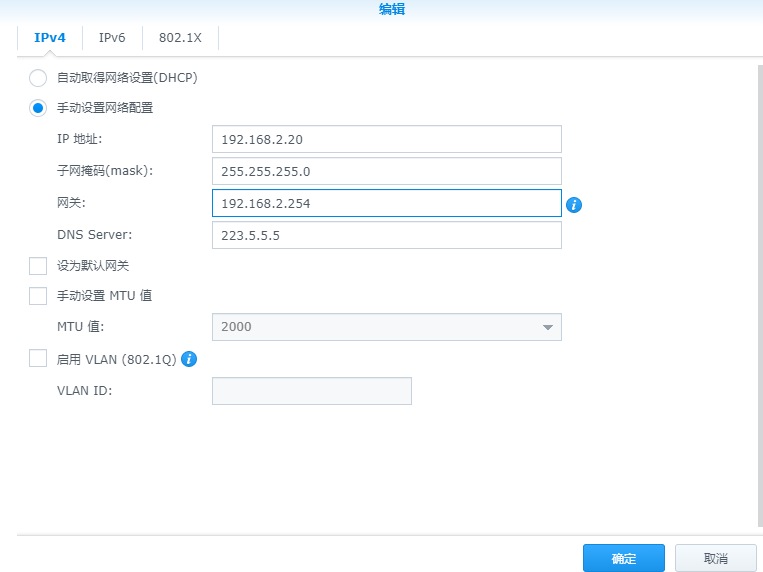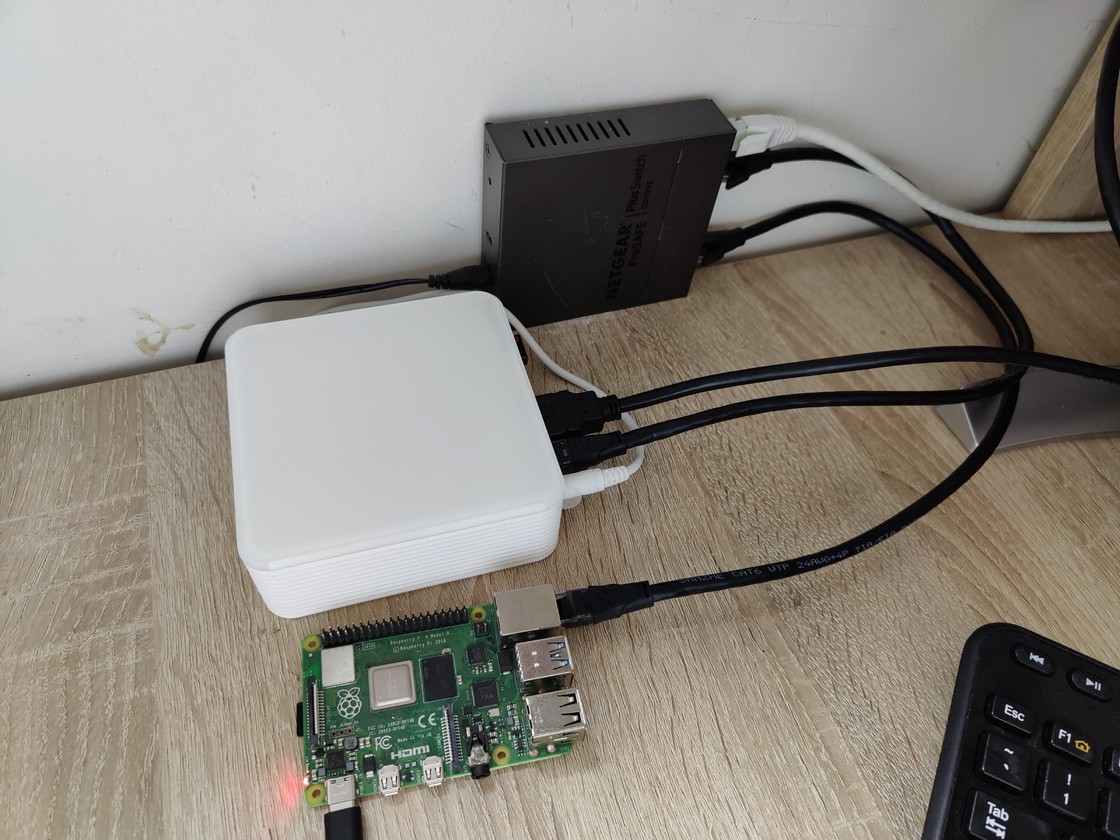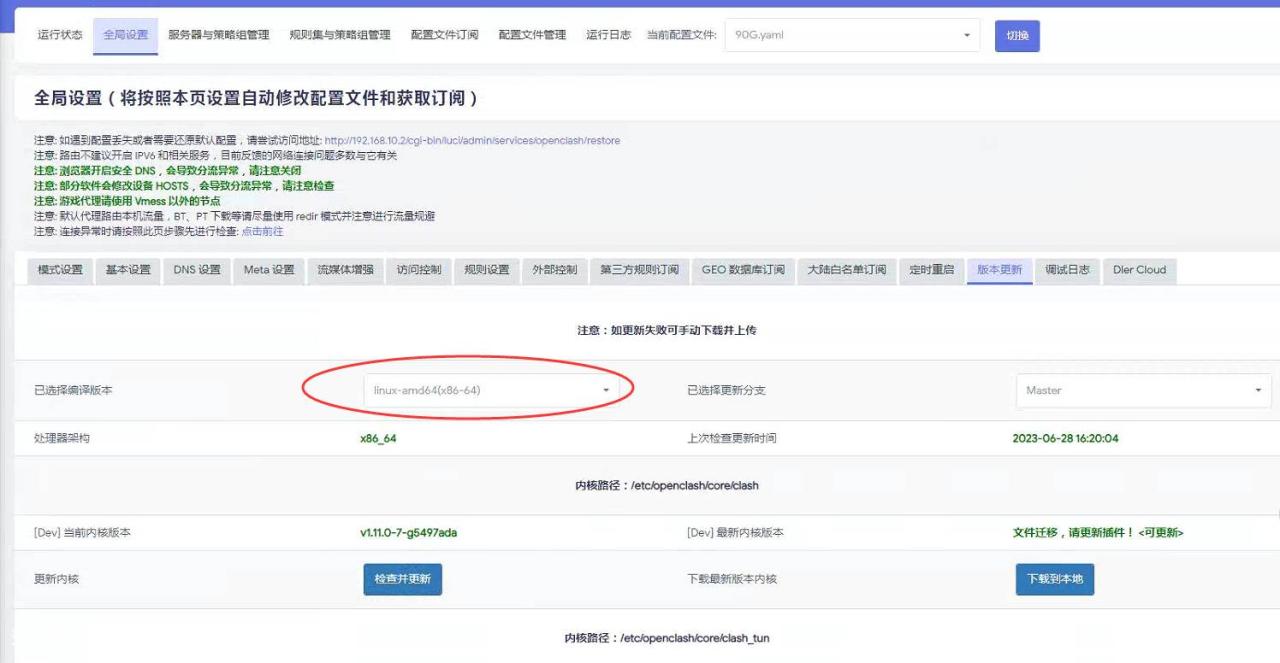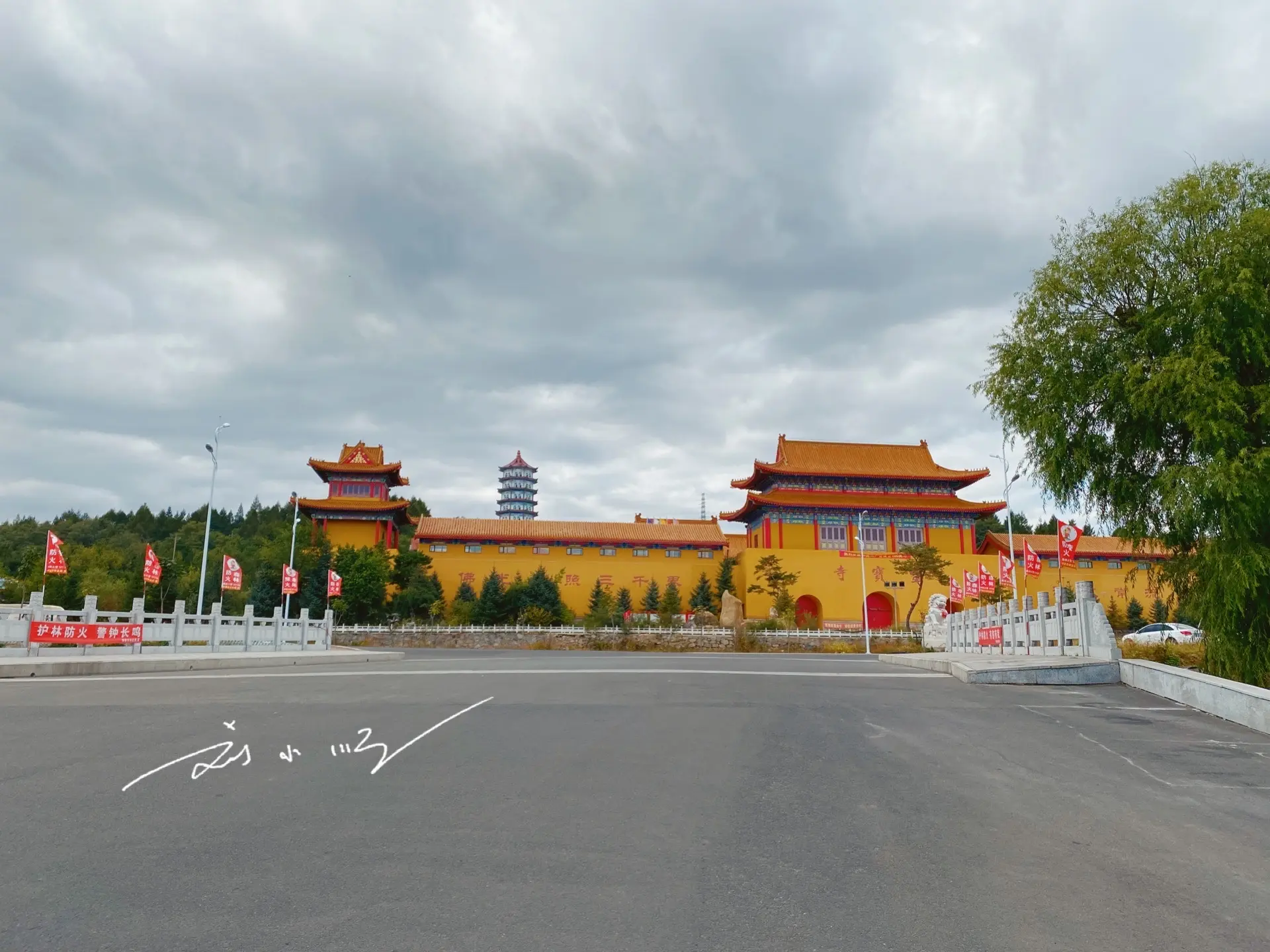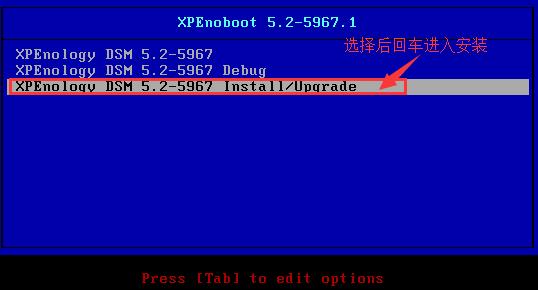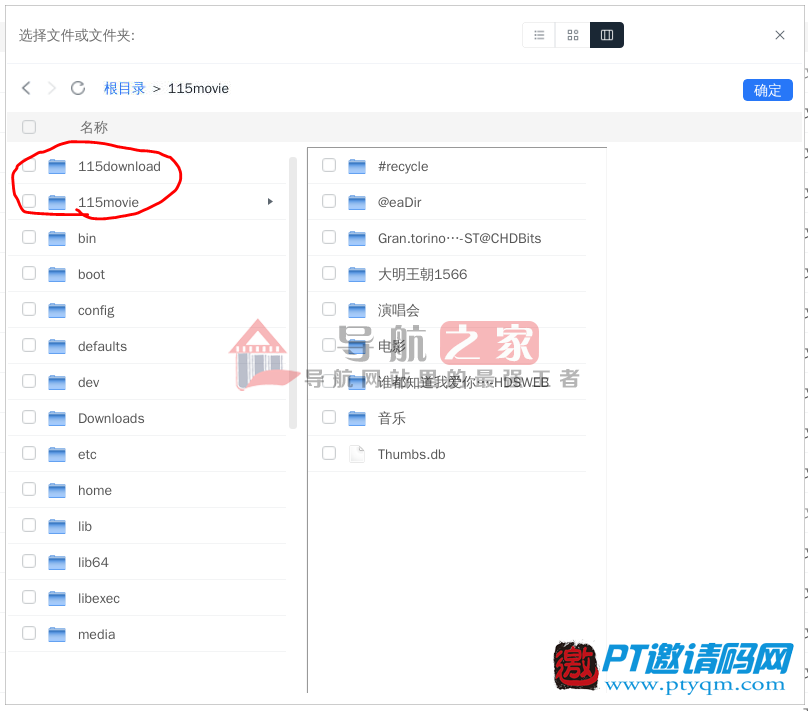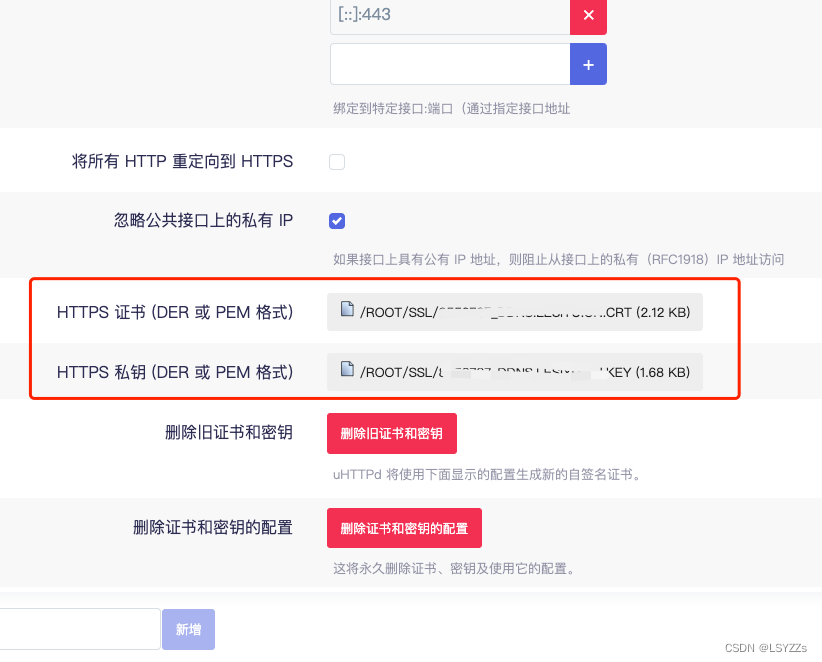这段时间潜心研究docker,想写点东西出来,最后写了个容器话运行的wordpress。
镜像还有脚本我打包了,挂在我的服务器上面,有时间的可以下载下来玩一下。
我把打包的文件放在了服务器上,下载速度可能有点慢。
wget http://www<span class="hljs-preprocessor">.seeit</span><span class="hljs-preprocessor">.life</span>/tools/lnmp<span class="hljs-preprocessor">.tar</span> <span class="hljs-preprocessor">#这个是镜像包还有启动脚本</span> wget http://www<span class="hljs-preprocessor">.seeit</span><span class="hljs-preprocessor">.life</span>/tools/startlnmp<span class="hljs-preprocessor">.sh</span> <span class="hljs-preprocessor">#这是解压镜像还有启动tar包里面的启动脚本</span>wget http://www<span class="hljs-preprocessor">.seeit</span><span class="hljs-preprocessor">.life</span>/tools/lnmp<span class="hljs-preprocessor">.tar</span> <span class="hljs-preprocessor">#这个是镜像包还有启动脚本</span> wget http://www<span class="hljs-preprocessor">.seeit</span><span class="hljs-preprocessor">.life</span>/tools/startlnmp<span class="hljs-preprocessor">.sh</span> <span class="hljs-preprocessor">#这是解压镜像还有启动tar包里面的启动脚本</span>
wget http://www.seeit.life/tools/lnmp.tar #这个是镜像包还有启动脚本 wget http://www.seeit.life/tools/startlnmp.sh #这是解压镜像还有启动tar包里面的启动脚本
全程自动化哦,只有最后的你要自己设置帐号密码。
只要
bash startlnmp<span class="hljs-preprocessor">.sh</span>bash startlnmp<span class="hljs-preprocessor">.sh</span>
bash startlnmp.sh
下面我把dockerfile文件放出来,并且还有用到了哪些文件。
[ root<span class="hljs-property">@node3</span> ~/lnmp ] fpm mariadb nginx[ root<span class="hljs-property">@node3</span> ~/lnmp ] fpm mariadb nginx
[ root@node3 ~/lnmp ] fpm mariadb nginx
[ root<span class="hljs-variable">@node3</span> ~<span class="hljs-regexp">/lnmp ]# cd fpm/</span> [ root<span class="hljs-variable">@node3</span> ~<span class="hljs-regexp">/lnmp/fpm</span> ] <span class="hljs-constant">CentOS</span>-<span class="hljs-constant">Base</span>.repo <span class="hljs-constant">Dockerfile</span> epel.repo[ root<span class="hljs-variable">@node3</span> ~<span class="hljs-regexp">/lnmp ]# cd fpm/</span> [ root<span class="hljs-variable">@node3</span> ~<span class="hljs-regexp">/lnmp/fpm</span> ] <span class="hljs-constant">CentOS</span>-<span class="hljs-constant">Base</span>.repo <span class="hljs-constant">Dockerfile</span> epel.repo
[ root@node3 ~/lnmp ]# cd fpm/ [ root@node3 ~/lnmp/fpm ] CentOS-Base.repo Dockerfile epel.repo
Centos-Base.repo epel.repo文件我把里面的地址改成了自己的私有仓库速度会快一点。
不改也没关系的。
[ root<span class="hljs-property">@node3</span> ~/lnmp/fpm ] FROM <span class="hljs-attribute">centos</span>:<span class="hljs-number">7.4</span><span class="hljs-number">.1708</span> MAINTAINER <span class="hljs-string">"Rootygl <rootygl@163.com>"</span> COPY CentOS-Base.repo \ epel.repo <span class="hljs-regexp">/etc/yum.repos.d/</span> RUN yum -y install php-fpm php-mbstring php-mysql; \ yum clean all; \ rm -rf <span class="hljs-regexp">/var/cache/yum/</span>*; VOLUME <span class="hljs-string">"/webapp/wordpress"</span> CMD [<span class="hljs-string">"/usr/sbin/php-fpm"</span>,<span class="hljs-string">"--nodaemonize"</span>][ root<span class="hljs-property">@node3</span> ~/lnmp/fpm ] FROM <span class="hljs-attribute">centos</span>:<span class="hljs-number">7.4</span><span class="hljs-number">.1708</span> MAINTAINER <span class="hljs-string">"Rootygl <rootygl@163.com>"</span> COPY CentOS-Base.repo \ epel.repo <span class="hljs-regexp">/etc/yum.repos.d/</span> RUN yum -y install php-fpm php-mbstring php-mysql; \ yum clean all; \ rm -rf <span class="hljs-regexp">/var/cache/yum/</span>*; VOLUME <span class="hljs-string">"/webapp/wordpress"</span> CMD [<span class="hljs-string">"/usr/sbin/php-fpm"</span>,<span class="hljs-string">"--nodaemonize"</span>]
[ root@node3 ~/lnmp/fpm ] FROM centos:7.4.1708 MAINTAINER "Rootygl <rootygl@163.com>" COPY CentOS-Base.repo \ epel.repo /etc/yum.repos.d/ RUN yum -y install php-fpm php-mbstring php-mysql; \ yum clean all; \ rm -rf /var/cache/yum/*; VOLUME "/webapp/wordpress" CMD ["/usr/sbin/php-fpm","--nodaemonize"]
[ root@node3 ~/lnmp/mariadb ]<span class="hljs-preprocessor"># ls</span> CentOS-Base<span class="hljs-preprocessor">.repo</span> Dockerfile epel<span class="hljs-preprocessor">.repo</span> start-db<span class="hljs-preprocessor">.sh</span>[ root@node3 ~/lnmp/mariadb ]<span class="hljs-preprocessor"># ls</span> CentOS-Base<span class="hljs-preprocessor">.repo</span> Dockerfile epel<span class="hljs-preprocessor">.repo</span> start-db<span class="hljs-preprocessor">.sh</span>
[ root@node3 ~/lnmp/mariadb ]# ls CentOS-Base.repo Dockerfile epel.repo start-db.sh
mariadb的Dockerfile文件
[ root<span class="hljs-property">@node3</span> ~/lnmp/mariadb ] FROM <span class="hljs-attribute">centos</span>:<span class="hljs-number">7.4</span><span class="hljs-number">.1708</span> MAINTAINER <span class="hljs-string">"Rootygl <rootygl@163.com>"</span> COPY CentOS-Base.repo \ epel.repo <span class="hljs-regexp">/etc/yum.repos.d/</span> COPY start-db.sh <span class="hljs-regexp">/usr/bin/</span> RUN yum -y install mariadb-server; \ yum clean all; \ rm -rf <span class="hljs-regexp">/var/cache/yum/</span>*; VOLUME <span class="hljs-string">"/var/lib/mysql"</span> ENTRYPOINT [<span class="hljs-string">"/bin/bash"</span>,<span class="hljs-string">"-c"</span>,<span class="hljs-string">"/usr/bin/start-db.sh"</span>][ root<span class="hljs-property">@node3</span> ~/lnmp/mariadb ] FROM <span class="hljs-attribute">centos</span>:<span class="hljs-number">7.4</span><span class="hljs-number">.1708</span> MAINTAINER <span class="hljs-string">"Rootygl <rootygl@163.com>"</span> COPY CentOS-Base.repo \ epel.repo <span class="hljs-regexp">/etc/yum.repos.d/</span> COPY start-db.sh <span class="hljs-regexp">/usr/bin/</span> RUN yum -y install mariadb-server; \ yum clean all; \ rm -rf <span class="hljs-regexp">/var/cache/yum/</span>*; VOLUME <span class="hljs-string">"/var/lib/mysql"</span> ENTRYPOINT [<span class="hljs-string">"/bin/bash"</span>,<span class="hljs-string">"-c"</span>,<span class="hljs-string">"/usr/bin/start-db.sh"</span>]
[ root@node3 ~/lnmp/mariadb ] FROM centos:7.4.1708 MAINTAINER "Rootygl <rootygl@163.com>" COPY CentOS-Base.repo \ epel.repo /etc/yum.repos.d/ COPY start-db.sh /usr/bin/ RUN yum -y install mariadb-server; \ yum clean all; \ rm -rf /var/cache/yum/*; VOLUME "/var/lib/mysql" ENTRYPOINT ["/bin/bash","-c","/usr/bin/start-db.sh"]
[ root@node3 ~/lnmp/mariadb ] <span class="hljs-shebang">#!/bin/bash</span> /usr/libexec/mariadb-prepare-db-dir /usr/bin/mysqld_safe --basedir=/usr [ root@node3 ~/lnmp/mariadb ] <span class="hljs-shebang">#!/bin/bash</span> /usr/libexec/mariadb-prepare-db-dir /usr/bin/mysqld_safe --basedir=/usr
[ root@node3 ~/lnmp/mariadb ] #!/bin/bash /usr/libexec/mariadb-prepare-db-dir /usr/bin/mysqld_safe --basedir=/usr
因为要修改里面的nginx.conf的配置文件反带到9000端口,我写在外面直接覆盖里面的就好了。
[ root<span class="hljs-variable">@node3</span> ~<span class="hljs-regexp">/lnmp/nginx</span> ] <span class="hljs-constant">Dockerfile</span> nginx.conf[ root<span class="hljs-variable">@node3</span> ~<span class="hljs-regexp">/lnmp/nginx</span> ] <span class="hljs-constant">Dockerfile</span> nginx.conf
[ root@node3 ~/lnmp/nginx ] Dockerfile nginx.conf
[ root<span class="hljs-variable">@node3</span> ~<span class="hljs-regexp">/lnmp/nginx</span> ] FROM centos:<span class="hljs-number">7.4</span>.<span class="hljs-number">1708</span> MAINTAINER <span class="hljs-string">"Rootygl <rootygl<span class="hljs-variable">@163</span>.com>"</span> ENV nginx_version <span class="hljs-number">1.12</span>.<span class="hljs-number">2</span> ENV nginx_url http:<span class="hljs-regexp">//nginx</span>.org/download/nginx-<span class="hljs-variable">${nginx_version}</span>.tar.gz WORKDIR <span class="hljs-string">"/usr/local/src/"</span> EXPOSE <span class="hljs-number">80</span>/tcp VOLUME <span class="hljs-string">"/webapp/wordpress"</span> ADD <span class="hljs-variable">${nginx_url}</span> /usr/<span class="hljs-keyword">local</span>/src/ RUN tar xf nginx-<span class="hljs-variable">${nginx_version}</span>.tar.gz && yum -<span class="hljs-keyword">y</span> install gcc pcre-devel openssl-devel make && yum clean all && rm -rf /var/cache/yum/* \ && cd nginx-<span class="hljs-variable">${nginx_version}</span> && ./configure && make && make install COPY nginx.conf /usr/<span class="hljs-keyword">local</span>/nginx/conf/ CMD [<span class="hljs-string">"/usr/local/nginx/sbin/nginx"</span>,<span class="hljs-string">"-g"</span>,<span class="hljs-string">"daemon off;"</span>][ root<span class="hljs-variable">@node3</span> ~<span class="hljs-regexp">/lnmp/nginx</span> ] FROM centos:<span class="hljs-number">7.4</span>.<span class="hljs-number">1708</span> MAINTAINER <span class="hljs-string">"Rootygl <rootygl<span class="hljs-variable">@163</span>.com>"</span> ENV nginx_version <span class="hljs-number">1.12</span>.<span class="hljs-number">2</span> ENV nginx_url http:<span class="hljs-regexp">//nginx</span>.org/download/nginx-<span class="hljs-variable">${nginx_version}</span>.tar.gz WORKDIR <span class="hljs-string">"/usr/local/src/"</span> EXPOSE <span class="hljs-number">80</span>/tcp VOLUME <span class="hljs-string">"/webapp/wordpress"</span> ADD <span class="hljs-variable">${nginx_url}</span> /usr/<span class="hljs-keyword">local</span>/src/ RUN tar xf nginx-<span class="hljs-variable">${nginx_version}</span>.tar.gz && yum -<span class="hljs-keyword">y</span> install gcc pcre-devel openssl-devel make && yum clean all && rm -rf /var/cache/yum/* \ && cd nginx-<span class="hljs-variable">${nginx_version}</span> && ./configure && make && make install COPY nginx.conf /usr/<span class="hljs-keyword">local</span>/nginx/conf/ CMD [<span class="hljs-string">"/usr/local/nginx/sbin/nginx"</span>,<span class="hljs-string">"-g"</span>,<span class="hljs-string">"daemon off;"</span>][ root@node3 ~/lnmp/nginx ] FROM centos:7.4.1708 MAINTAINER "Rootygl <rootygl@163.com>" ENV nginx_version 1.12.2 ENV nginx_url http://nginx.org/download/nginx-${nginx_version}.tar.gz WORKDIR "/usr/local/src/" EXPOSE 80/tcp VOLUME "/webapp/wordpress" ADD ${nginx_url} /usr/local/src/ RUN tar xf nginx-${nginx_version}.tar.gz && yum -y install gcc pcre-devel openssl-devel make && yum clean all && rm -rf /var/cache/yum/* \ && cd nginx-${nginx_version} && ./configure && make && make install COPY nginx.conf /usr/local/nginx/conf/ CMD ["/usr/local/nginx/sbin/nginx","-g","daemon off;"]
[ root@node3 ~/lnmp/nginx ]<span class="hljs-preprocessor"># cat nginx.conf </span> <span class="hljs-preprocessor">#user nobody;</span> worker_processes auto <span class="hljs-preprocessor">#error_log logs/error.log;</span> <span class="hljs-preprocessor">#error_log logs/error.log notice;</span> <span class="hljs-preprocessor">#error_log logs/error.log info;</span> <span class="hljs-preprocessor">#pid logs/nginx.pid;</span> events { worker_connections <span class="hljs-number">1024</span> } http { include mime<span class="hljs-preprocessor">.types</span> default_type application/octet-stream <span class="hljs-preprocessor">#log_format main '$remote_addr - $remote_user [$time_local] "$request" '</span> <span class="hljs-preprocessor"># '$status $body_bytes_sent "$http_referer" '</span> <span class="hljs-preprocessor"># '"$http_user_agent" "$http_x_forwarded_for"';</span> <span class="hljs-preprocessor">#access_log logs/access.log main;</span> sendfile on <span class="hljs-preprocessor">#tcp_nopush on;</span> <span class="hljs-preprocessor">#keepalive_timeout 0;</span> keepalive_timeout <span class="hljs-number">5</span> <span class="hljs-preprocessor">#gzip on;</span> server { listen <span class="hljs-number">80</span> server_name localhost <span class="hljs-preprocessor">#charset koi8-r;</span> <span class="hljs-preprocessor">#access_log logs/host.access.log main;</span> location / { root /webapp/wordpress index index<span class="hljs-preprocessor">.php</span> index<span class="hljs-preprocessor">.html</span> index<span class="hljs-preprocessor">.htm</span> } <span class="hljs-preprocessor">#error_page 404 /404.html;</span> <span class="hljs-preprocessor"># redirect server error pages to the static page /50x.html</span> <span class="hljs-preprocessor">#</span> error_page <span class="hljs-number">500</span> <span class="hljs-number">502</span> <span class="hljs-number">503</span> <span class="hljs-number">504</span> /<span class="hljs-number">50</span><span class="hljs-built_in">x</span><span class="hljs-preprocessor">.html</span> location = /<span class="hljs-number">50</span><span class="hljs-built_in">x</span><span class="hljs-preprocessor">.html</span> { root html } <span class="hljs-preprocessor"># proxy the PHP scripts to Apache listening on 127.0.0.1:80</span> <span class="hljs-preprocessor">#</span> <span class="hljs-preprocessor">#location ~ \.php$ {<!-- --></span> <span class="hljs-preprocessor"># proxy_pass http://127.0.0.1;</span> <span class="hljs-preprocessor">#}</span> <span class="hljs-preprocessor"># pass the PHP scripts to FastCGI server listening on 127.0.0.1:9000</span> <span class="hljs-preprocessor">#</span> location ~ \<span class="hljs-preprocessor">.php</span>$ { root /webapp/wordpress fastcgi_pass <span class="hljs-number">127.0</span><span class="hljs-number">.0</span><span class="hljs-number">.1</span>:<span class="hljs-number">9000</span> fastcgi_index index<span class="hljs-preprocessor">.php</span> fastcgi_param SCRIPT_FILENAME $document_root$fastcgi_script_name include fastcgi_params } <span class="hljs-preprocessor"># deny access to .htaccess files, if Apache's document root</span> <span class="hljs-preprocessor"># concurs with nginx's one</span> <span class="hljs-preprocessor">#</span> <span class="hljs-preprocessor">#location ~ /\.ht {<!-- --></span> <span class="hljs-preprocessor"># deny all;</span> <span class="hljs-preprocessor">#}</span> } <span class="hljs-preprocessor"># another virtual host using mix of IP-, name-, and port-based configuration</span> <span class="hljs-preprocessor">#</span> <span class="hljs-preprocessor">#server {<!-- --></span> <span class="hljs-preprocessor"># listen 8000;</span> <span class="hljs-preprocessor"># listen somename:8080;</span> <span class="hljs-preprocessor"># server_name somename alias another.alias;</span> <span class="hljs-preprocessor"># location / {<!-- --></span> <span class="hljs-preprocessor"># root html;</span> <span class="hljs-preprocessor"># index index.html index.htm;</span> <span class="hljs-preprocessor"># }</span> <span class="hljs-preprocessor">#}</span> <span class="hljs-preprocessor"># HTTPS server</span> <span class="hljs-preprocessor">#</span> <span class="hljs-preprocessor">#server {<!-- --></span> <span class="hljs-preprocessor"># listen 443 ssl;</span> <span class="hljs-preprocessor"># server_name localhost;</span> <span class="hljs-preprocessor"># ssl_certificate cert.pem;</span> <span class="hljs-preprocessor"># ssl_certificate_key cert.key;</span> <span class="hljs-preprocessor"># ssl_session_cache shared:SSL:1m;</span> <span class="hljs-preprocessor"># ssl_session_timeout 5m;</span> <span class="hljs-preprocessor"># ssl_ciphers HIGH:!aNULL:!MD5;</span> <span class="hljs-preprocessor"># ssl_prefer_server_ciphers on;</span> <span class="hljs-preprocessor"># location / {<!-- --></span> <span class="hljs-preprocessor"># root html;</span> <span class="hljs-preprocessor"># index index.html index.htm;</span> <span class="hljs-preprocessor"># }</span> <span class="hljs-preprocessor">#}</span> }[ root@node3 ~/lnmp/nginx ]<span class="hljs-preprocessor"># cat nginx.conf </span> <span class="hljs-preprocessor">#user nobody;</span> worker_processes auto <span class="hljs-preprocessor">#error_log logs/error.log;</span> <span class="hljs-preprocessor">#error_log logs/error.log notice;</span> <span class="hljs-preprocessor">#error_log logs/error.log info;</span> <span class="hljs-preprocessor">#pid logs/nginx.pid;</span> events { worker_connections <span class="hljs-number">1024</span> } http { include mime<span class="hljs-preprocessor">.types</span> default_type application/octet-stream <span class="hljs-preprocessor">#log_format main '$remote_addr - $remote_user [$time_local] "$request" '</span> <span class="hljs-preprocessor"># '$status $body_bytes_sent "$http_referer" '</span> <span class="hljs-preprocessor"># '"$http_user_agent" "$http_x_forwarded_for"';</span> <span class="hljs-preprocessor">#access_log logs/access.log main;</span> sendfile on <span class="hljs-preprocessor">#tcp_nopush on;</span> <span class="hljs-preprocessor">#keepalive_timeout 0;</span> keepalive_timeout <span class="hljs-number">5</span> <span class="hljs-preprocessor">#gzip on;</span> server { listen <span class="hljs-number">80</span> server_name localhost <span class="hljs-preprocessor">#charset koi8-r;</span> <span class="hljs-preprocessor">#access_log logs/host.access.log main;</span> location / { root /webapp/wordpress index index<span class="hljs-preprocessor">.php</span> index<span class="hljs-preprocessor">.html</span> index<span class="hljs-preprocessor">.htm</span> } <span class="hljs-preprocessor">#error_page 404 /404.html;</span> <span class="hljs-preprocessor"># redirect server error pages to the static page /50x.html</span> <span class="hljs-preprocessor">#</span> error_page <span class="hljs-number">500</span> <span class="hljs-number">502</span> <span class="hljs-number">503</span> <span class="hljs-number">504</span> /<span class="hljs-number">50</span><span class="hljs-built_in">x</span><span class="hljs-preprocessor">.html</span> location = /<span class="hljs-number">50</span><span class="hljs-built_in">x</span><span class="hljs-preprocessor">.html</span> { root html } <span class="hljs-preprocessor"># proxy the PHP scripts to Apache listening on 127.0.0.1:80</span> <span class="hljs-preprocessor">#</span> <span class="hljs-preprocessor">#location ~ \.php$ {<!-- --></span> <span class="hljs-preprocessor"># proxy_pass http://127.0.0.1;</span> <span class="hljs-preprocessor">#}</span> <span class="hljs-preprocessor"># pass the PHP scripts to FastCGI server listening on 127.0.0.1:9000</span> <span class="hljs-preprocessor">#</span> location ~ \<span class="hljs-preprocessor">.php</span>$ { root /webapp/wordpress fastcgi_pass <span class="hljs-number">127.0</span><span class="hljs-number">.0</span><span class="hljs-number">.1</span>:<span class="hljs-number">9000</span> fastcgi_index index<span class="hljs-preprocessor">.php</span> fastcgi_param SCRIPT_FILENAME $document_root$fastcgi_script_name include fastcgi_params } <span class="hljs-preprocessor"># deny access to .htaccess files, if Apache's document root</span> <span class="hljs-preprocessor"># concurs with nginx's one</span> <span class="hljs-preprocessor">#</span> <span class="hljs-preprocessor">#location ~ /\.ht {<!-- --></span> <span class="hljs-preprocessor"># deny all;</span> <span class="hljs-preprocessor">#}</span> } <span class="hljs-preprocessor"># another virtual host using mix of IP-, name-, and port-based configuration</span> <span class="hljs-preprocessor">#</span> <span class="hljs-preprocessor">#server {<!-- --></span> <span class="hljs-preprocessor"># listen 8000;</span> <span class="hljs-preprocessor"># listen somename:8080;</span> <span class="hljs-preprocessor"># server_name somename alias another.alias;</span> <span class="hljs-preprocessor"># location / {<!-- --></span> <span class="hljs-preprocessor"># root html;</span> <span class="hljs-preprocessor"># index index.html index.htm;</span> <span class="hljs-preprocessor"># }</span> <span class="hljs-preprocessor">#}</span> <span class="hljs-preprocessor"># HTTPS server</span> <span class="hljs-preprocessor">#</span> <span class="hljs-preprocessor">#server {<!-- --></span> <span class="hljs-preprocessor"># listen 443 ssl;</span> <span class="hljs-preprocessor"># server_name localhost;</span> <span class="hljs-preprocessor"># ssl_certificate cert.pem;</span> <span class="hljs-preprocessor"># ssl_certificate_key cert.key;</span> <span class="hljs-preprocessor"># ssl_session_cache shared:SSL:1m;</span> <span class="hljs-preprocessor"># ssl_session_timeout 5m;</span> <span class="hljs-preprocessor"># ssl_ciphers HIGH:!aNULL:!MD5;</span> <span class="hljs-preprocessor"># ssl_prefer_server_ciphers on;</span> <span class="hljs-preprocessor"># location / {<!-- --></span> <span class="hljs-preprocessor"># root html;</span> <span class="hljs-preprocessor"># index index.html index.htm;</span> <span class="hljs-preprocessor"># }</span> <span class="hljs-preprocessor">#}</span> }[ root@node3 ~/lnmp/nginx ]# cat nginx.conf #user nobody; worker_processes auto #error_log logs/error.log; #error_log logs/error.log notice; #error_log logs/error.log info; #pid logs/nginx.pid; events { worker_connections 1024 } http { include mime.types default_type application/octet-stream #log_format main '$remote_addr - $remote_user [$time_local] "$request" ' # '$status $body_bytes_sent "$http_referer" ' # '"$http_user_agent" "$http_x_forwarded_for"'; #access_log logs/access.log main; sendfile on #tcp_nopush on; #keepalive_timeout 0; keepalive_timeout 5 #gzip on; server { listen 80 server_name localhost #charset koi8-r; #access_log logs/host.access.log main; location / { root /webapp/wordpress index index.php index.html index.htm } #error_page 404 /404.html; # redirect server error pages to the static page /50x.html # error_page 500 502 503 504 /50x.html location = /50x.html { root html } # proxy the PHP scripts to Apache listening on 127.0.0.1:80 # #location ~ \.php$ { # proxy_pass http://127.0.0.1; #} # pass the PHP scripts to FastCGI server listening on 127.0.0.1:9000 # location ~ \.php$ { root /webapp/wordpress fastcgi_pass 127.0.0.1:9000 fastcgi_index index.php fastcgi_param SCRIPT_FILENAME $document_root$fastcgi_script_name include fastcgi_params } # deny access to .htaccess files, if Apache's document root # concurs with nginx's one # #location ~ /\.ht { # deny all; #} } # another virtual host using mix of IP-, name-, and port-based configuration # #server { # listen 8000; # listen somename:8080; # server_name somename alias another.alias; # location / { # root html; # index index.html index.htm; # } #} # HTTPS server # #server { # listen 443 ssl; # server_name localhost; # ssl_certificate cert.pem; # ssl_certificate_key cert.key; # ssl_session_cache shared:SSL:1m; # ssl_session_timeout 5m; # ssl_ciphers HIGH:!aNULL:!MD5; # ssl_prefer_server_ciphers on; # location / { # root html; # index index.html index.htm; # } #} }
我没有使用docker-compose编排容器写yam文件,比较简单也懒得写了,就集成到了启动脚本上了。
[ root@localhost ~/lnmp ]<span class="hljs-preprocessor"># ls</span> docker-lnmp<span class="hljs-preprocessor">.sh</span> fpmv1<span class="hljs-number">.0</span><span class="hljs-preprocessor">.tar</span> mariadbv1<span class="hljs-number">.0</span><span class="hljs-preprocessor">.tar</span> nginxv1<span class="hljs-number">.0</span><span class="hljs-preprocessor">.tar</span> wordpress-<span class="hljs-number">4.7</span><span class="hljs-number">.4</span>-zh_CN<span class="hljs-preprocessor">.tar</span><span class="hljs-preprocessor">.gz</span>[ root@localhost ~/lnmp ]<span class="hljs-preprocessor"># ls</span> docker-lnmp<span class="hljs-preprocessor">.sh</span> fpmv1<span class="hljs-number">.0</span><span class="hljs-preprocessor">.tar</span> mariadbv1<span class="hljs-number">.0</span><span class="hljs-preprocessor">.tar</span> nginxv1<span class="hljs-number">.0</span><span class="hljs-preprocessor">.tar</span> wordpress-<span class="hljs-number">4.7</span><span class="hljs-number">.4</span>-zh_CN<span class="hljs-preprocessor">.tar</span><span class="hljs-preprocessor">.gz</span>
[ root@localhost ~/lnmp ]# ls docker-lnmp.sh fpmv1.0.tar mariadbv1.0.tar nginxv1.0.tar wordpress-4.7.4-zh_CN.tar.gz
三个docker导出的镜像加wordpress的压缩包,还有启动初始化脚本。
[ root@localhost ~/lnmp ] <span class="hljs-shebang">#!/bin/bash </span> yum install -y wget > /dev/null wget https://download.docker.com/linux/centos/docker-ce.repo mv docker-ce.repo /etc/yum.repos.d/ yum clean all && yum repolist all > /dev/null yum -y install docker-ce mkdir -p /etc/docker tee /etc/docker/daemon.json <<-<span class="hljs-string">'EOF'</span> { <span class="hljs-string">"registry-mirrors"</span>: [<span class="hljs-string">"https://us67o6c8.mirror.aliyuncs.com"</span>] } EOF systemctl restart docker docker load -i fpmv1.<span class="hljs-number">0</span>.tar docker load -i nginxv1.<span class="hljs-number">0</span>.tar docker load -i mariadbv1.<span class="hljs-number">0</span>.tar docker run --name n1 -P -p80:<span class="hljs-number">80</span> <span class="hljs-operator">-d</span> nginx:v1.<span class="hljs-number">0</span> docker run --name fpm1 <span class="hljs-operator">-d</span> --volumes-from n1 --net container:n1 fpm:v1.<span class="hljs-number">0</span> docker run --name db1 --net container:fpm1 <span class="hljs-operator">-d</span> mariadb:v1.<span class="hljs-number">0</span> nginxworkdir=`docker inspect <span class="hljs-operator">-f</span> {<!-- -->{.Mounts}} n1 | cut <span class="hljs-operator">-d</span> <span class="hljs-string">" "</span> <span class="hljs-operator">-f</span> <span class="hljs-number">3</span>` mariadbworkdir=`docker inspect <span class="hljs-operator">-f</span> {<!-- -->{.Mounts}} db1 | cut <span class="hljs-operator">-d</span> <span class="hljs-string">" "</span> <span class="hljs-operator">-f</span> <span class="hljs-number">3</span>` tar xf wordpress-<span class="hljs-number">4.7</span>.<span class="hljs-number">4</span>-zh_CN.tar.gz mv wordpress/* <span class="hljs-variable">$nginxworkdir</span> mkdir <span class="hljs-variable">$mariadbworkdir</span>/wordpress/ chown -R <span class="hljs-number">27</span>:<span class="hljs-number">27</span> <span class="hljs-variable">$mariadbworkdir</span>/wordpress/ cp <span class="hljs-variable">$nginxworkdir</span>/wp-config-sample.php <span class="hljs-variable">$nginxworkdir</span>/wp-config.php sed -i s/database_name_here/wordpress/ <span class="hljs-variable">$nginxworkdir</span>/wp-config.php sed -i s/username_here/root/ <span class="hljs-variable">$nginxworkdir</span>/wp-config.php sed -i s/password_here// <span class="hljs-variable">$nginxworkdir</span>/wp-config.php sed -i s/<span class="hljs-string">'localhost'</span>/<span class="hljs-string">'127.0.0.1'</span>/ <span class="hljs-variable">$nginxworkdir</span>/wp-config.php <span class="hljs-built_in">echo</span> <span class="hljs-string">'数据库名: wordpress'</span> <span class="hljs-built_in">echo</span> <span class="hljs-string">'用户名: root'</span> <span class="hljs-built_in">echo</span> <span class="hljs-string">'密码: (空)'</span> <span class="hljs-built_in">echo</span> <span class="hljs-string">'数据库主机:127.0.0.1'</span> [ root@localhost ~/lnmp ] <span class="hljs-shebang">#!/bin/bash </span> yum install -y wget > /dev/null wget https://download.docker.com/linux/centos/docker-ce.repo mv docker-ce.repo /etc/yum.repos.d/ yum clean all && yum repolist all > /dev/null yum -y install docker-ce mkdir -p /etc/docker tee /etc/docker/daemon.json <<-<span class="hljs-string">'EOF'</span> { <span class="hljs-string">"registry-mirrors"</span>: [<span class="hljs-string">"https://us67o6c8.mirror.aliyuncs.com"</span>] } EOF systemctl restart docker docker load -i fpmv1.<span class="hljs-number">0</span>.tar docker load -i nginxv1.<span class="hljs-number">0</span>.tar docker load -i mariadbv1.<span class="hljs-number">0</span>.tar docker run --name n1 -P -p80:<span class="hljs-number">80</span> <span class="hljs-operator">-d</span> nginx:v1.<span class="hljs-number">0</span> docker run --name fpm1 <span class="hljs-operator">-d</span> --volumes-from n1 --net container:n1 fpm:v1.<span class="hljs-number">0</span> docker run --name db1 --net container:fpm1 <span class="hljs-operator">-d</span> mariadb:v1.<span class="hljs-number">0</span> nginxworkdir=`docker inspect <span class="hljs-operator">-f</span> {<!-- -->{.Mounts}} n1 | cut <span class="hljs-operator">-d</span> <span class="hljs-string">" "</span> <span class="hljs-operator">-f</span> <span class="hljs-number">3</span>` mariadbworkdir=`docker inspect <span class="hljs-operator">-f</span> {<!-- -->{.Mounts}} db1 | cut <span class="hljs-operator">-d</span> <span class="hljs-string">" "</span> <span class="hljs-operator">-f</span> <span class="hljs-number">3</span>` tar xf wordpress-<span class="hljs-number">4.7</span>.<span class="hljs-number">4</span>-zh_CN.tar.gz mv wordpress/* <span class="hljs-variable">$nginxworkdir</span> mkdir <span class="hljs-variable">$mariadbworkdir</span>/wordpress/ chown -R <span class="hljs-number">27</span>:<span class="hljs-number">27</span> <span class="hljs-variable">$mariadbworkdir</span>/wordpress/ cp <span class="hljs-variable">$nginxworkdir</span>/wp-config-sample.php <span class="hljs-variable">$nginxworkdir</span>/wp-config.php sed -i s/database_name_here/wordpress/ <span class="hljs-variable">$nginxworkdir</span>/wp-config.php sed -i s/username_here/root/ <span class="hljs-variable">$nginxworkdir</span>/wp-config.php sed -i s/password_here// <span class="hljs-variable">$nginxworkdir</span>/wp-config.php sed -i s/<span class="hljs-string">'localhost'</span>/<span class="hljs-string">'127.0.0.1'</span>/ <span class="hljs-variable">$nginxworkdir</span>/wp-config.php <span class="hljs-built_in">echo</span> <span class="hljs-string">'数据库名: wordpress'</span> <span class="hljs-built_in">echo</span> <span class="hljs-string">'用户名: root'</span> <span class="hljs-built_in">echo</span> <span class="hljs-string">'密码: (空)'</span> <span class="hljs-built_in">echo</span> <span class="hljs-string">'数据库主机:127.0.0.1'</span> [ root@localhost ~/lnmp ] #!/bin/bash yum install -y wget > /dev/null wget https://download.docker.com/linux/centos/docker-ce.repo mv docker-ce.repo /etc/yum.repos.d/ yum clean all && yum repolist all > /dev/null yum -y install docker-ce mkdir -p /etc/docker tee /etc/docker/daemon.json <<-'EOF' { "registry-mirrors": ["https://us67o6c8.mirror.aliyuncs.com"] } EOF systemctl restart docker docker load -i fpmv1.0.tar docker load -i nginxv1.0.tar docker load -i mariadbv1.0.tar docker run --name n1 -P -p80:80 -d nginx:v1.0 docker run --name fpm1 -d --volumes-from n1 --net container:n1 fpm:v1.0 docker run --name db1 --net container:fpm1 -d mariadb:v1.0 nginxworkdir=`docker inspect -f {{.Mounts}} n1 | cut -d " " -f 3` mariadbworkdir=`docker inspect -f {{.Mounts}} db1 | cut -d " " -f 3` tar xf wordpress-4.7.4-zh_CN.tar.gz mv wordpress/* $nginxworkdir mkdir $mariadbworkdir/wordpress/ chown -R 27:27 $mariadbworkdir/wordpress/ cp $nginxworkdir/wp-config-sample.php $nginxworkdir/wp-config.php sed -i s/database_name_here/wordpress/ $nginxworkdir/wp-config.php sed -i s/username_here/root/ $nginxworkdir/wp-config.php sed -i s/password_here// $nginxworkdir/wp-config.php sed -i s/'localhost'/'127.0.0.1'/ $nginxworkdir/wp-config.php echo '数据库名: wordpress' echo '用户名: root' echo '密码: (空)' echo '数据库主机:127.0.0.1'
基本上东西都放在这里了。
docker容器技术可以大大的减轻很多重复的工作,
一次创建,到处运行。资源弹性化利用…
原文链接:https://blog.csdn.net/q919683527/article/details/78937189
© 版权声明
声明📢本站内容均来自互联网,归原创作者所有,如有侵权必删除。
本站文章皆由CC-4.0协议发布,如无来源则为原创,转载请注明出处。
THE END



